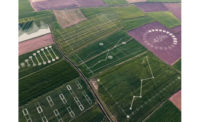Hydroponic farming is undergoing a renaissance. This trend looks to extend into 2020, as food insecurity increases, global calorie consumption rises and newer, more lucrative crops grow in volume. The change in eating habits to more plant-based food preferences will also play a role in the development of hydroponic systems in areas of large populations. That’s because hydroponic farms are considered to be a solution in satisfying the demands for a more plant-based diet in a more insecure food supply chain.
Challenges facing the hydroponic farming industry such as decreased labor pool, growing pressure to keep food prices low and increasing costs of production are some of the same challenges facing many food production systems.
Labor is one of the biggest concerns. The agricultural sector faces a widening labor gap, with more jobs to be filled than previous years. In North America, the growing global demand for North American-grown agricultural produce is paving the way for more agricultural companies, with many of the hydroponic farms growing a wide variety of vegetables to support the growing plant-based diet trends.
On the other hand, the industry is experiencing a shrinking workforce, mainly due to the rising number of retirements and fewer younger workers entering the labor force. The response to this is to decrease reliance on labor and increase use of automation. While automated irrigation systems have been available for some time, new developments in material handling, scouting, harvesting and packing result in more innovative machines for hydroponic farmers. Some recent advancements include robots that can scan plants to determine ripeness levels of fruits and target which fruits to harvest, as well as robots that can automatically inspect for weeds and remove them.
Meanwhile, food prices continue to increase, as the demand for more plant-based proteins rises. The hydroponic farming industry is in a unique spot where demand for vegetables is growing faster than the rate at which more farms can be built. The industry is also seeing viable food production space being turned to grow recreational crops, further limiting the amount of available food.
However, to ensure that food is accessible, prices still need to be kept low. Consumer spending on fruits and vegetables is not increasing at the rate consumers are spending on other food. While demand is increasing, what consumers are willing to pay is not. To overcome this trend, two things need to occur—costs need to be controlled, so that there is minimal rise in prices, and second, packaging needs to show consumers the value of the products they are buying. For hydroponic farmers, illustrating value is key. Foods grown hydroponically have lower risk for foodborne human pathogens, less reliance on pesticides, and in some cases, can be grown using zero pesticides. Arable land is not being used for food production, thus saving it for future generations to use sustainably. Hydroponic-farmed products are also generally less tied to seasonal variability, and can be located close to large population centers, thereby reducing travel and CO2 emissions. As a result of the decreased amount of travel time, consumers are getting the most nutritional value from these products.
While the industry does have its challenges, there are many benefits and trends involving this new way of food processing.
Food safety is the most important benefit. Most hydroponic farms are in controlled environments. Here, products are grown under strict quality control parameters following strict preventative practices. This also allows for hydroponic growers to avoid using pesticides. Hydroponically grown produce have consistently fewer recalls than field-grown products. And, for farms located close to their consumer base, companies can employ hold release strategies, where the product is held until it is confirmed to be free of pathogens and then released to public.
Hydroponic farming also provides improved quality characteristics of the plant, in particular, nutrition. People want to eat vegetables because it is the healthier option. People also want to see increases in their health from changing to more a plant-based diet. But, the change can be slow and requires serving sizes of vegetables that are unreasonable for a single meal. Improving the nutritional value of the plants is possible through hydroponic growing and controlled environment agriculture. Increase in pH, fertilizer or changing of light quality can increase and decrease nutritional compounds in the plants, allowing farmers to pick what nutritional aspect to increase.
Hydroponic farming is undergoing rapid changes. In 2020, it will enable consumers to eat healthier and be closer to their food. It can help take the uncertainty out of what to buy at the grocery store with year-round availability of clean, safe, heathy food.




